How to Draw the Human Body
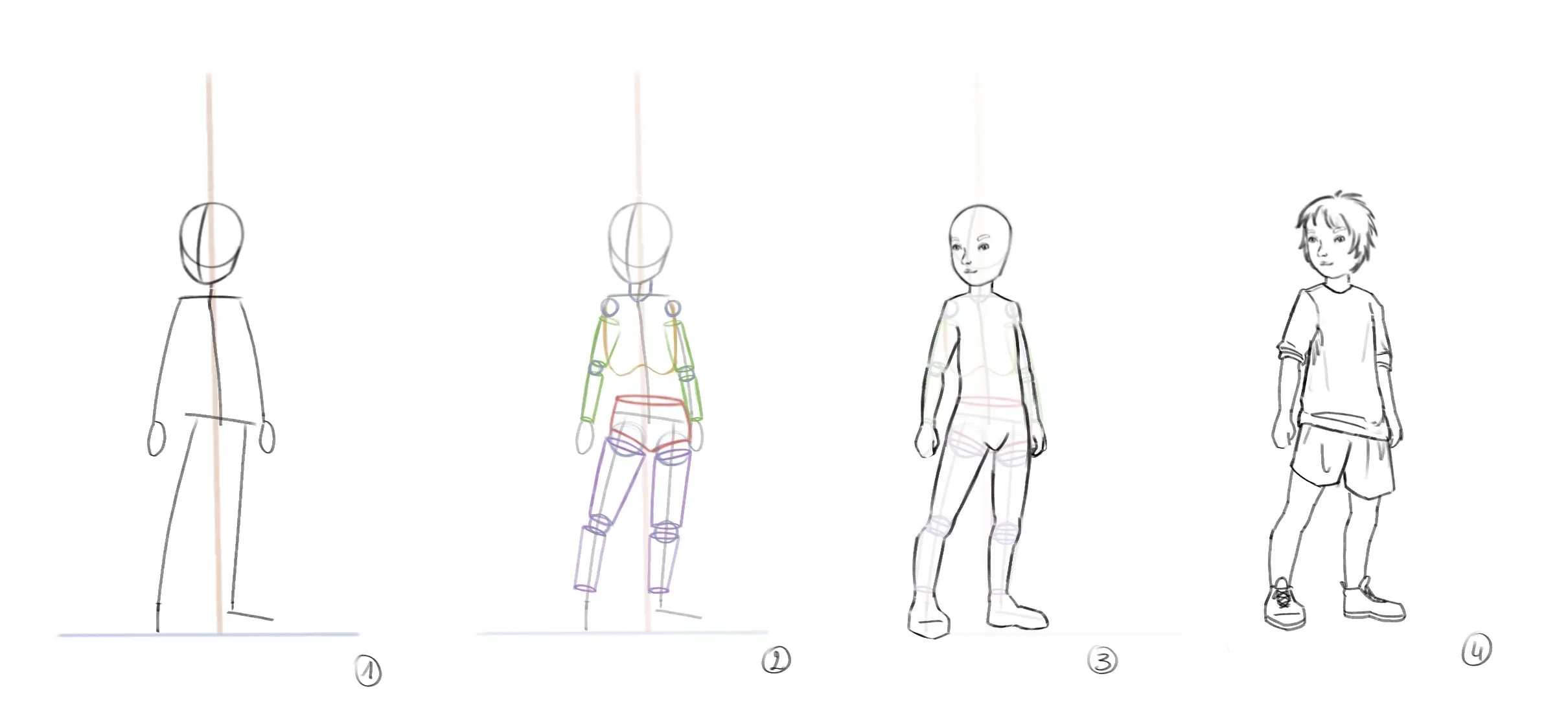
Hello everyone, today I suggest we look together at one of the fundamentals in drawing: the human body!
Often, when learning to draw, so-called anatomy, i.e. the structure and functioning of the body, is considered very boring and even when we decide to delve into it, it can be intimidating. We will see together that, by knowing a few basic rules, it can turn out to be much less complicated than expected and allow us to make rapid progress in bringing more characters to life.
Get your pencils, paper or tablet ready and most importantly, your creativity! Let's go!
ANATOMICAL OVERVIEW
The human body is composed of many different elements that we all have in common: the skeleton, muscles, organs... To learn how to draw the human body, you can start with generalities to acquire the basics and then work on the details to create different characters.
Among the most important elements to know when drawing a human body are two: the skeleton and the muscles.
The skeleton serves as the base for the entire body, and although there are differences, one can consider the proportions and shapes of the skeleton as common to everyone. What is important with the skeleton is not to know all the bones or their location, but to have an idea in order to understand how everything fits together.
As far as muscles are concerned, the whole is comparable to the skeleton; everyone has the same ones and they are essential to give structure to the design, the only difference being that each individual will have a different muscle tone and will therefore be more or less pronounced in the design.
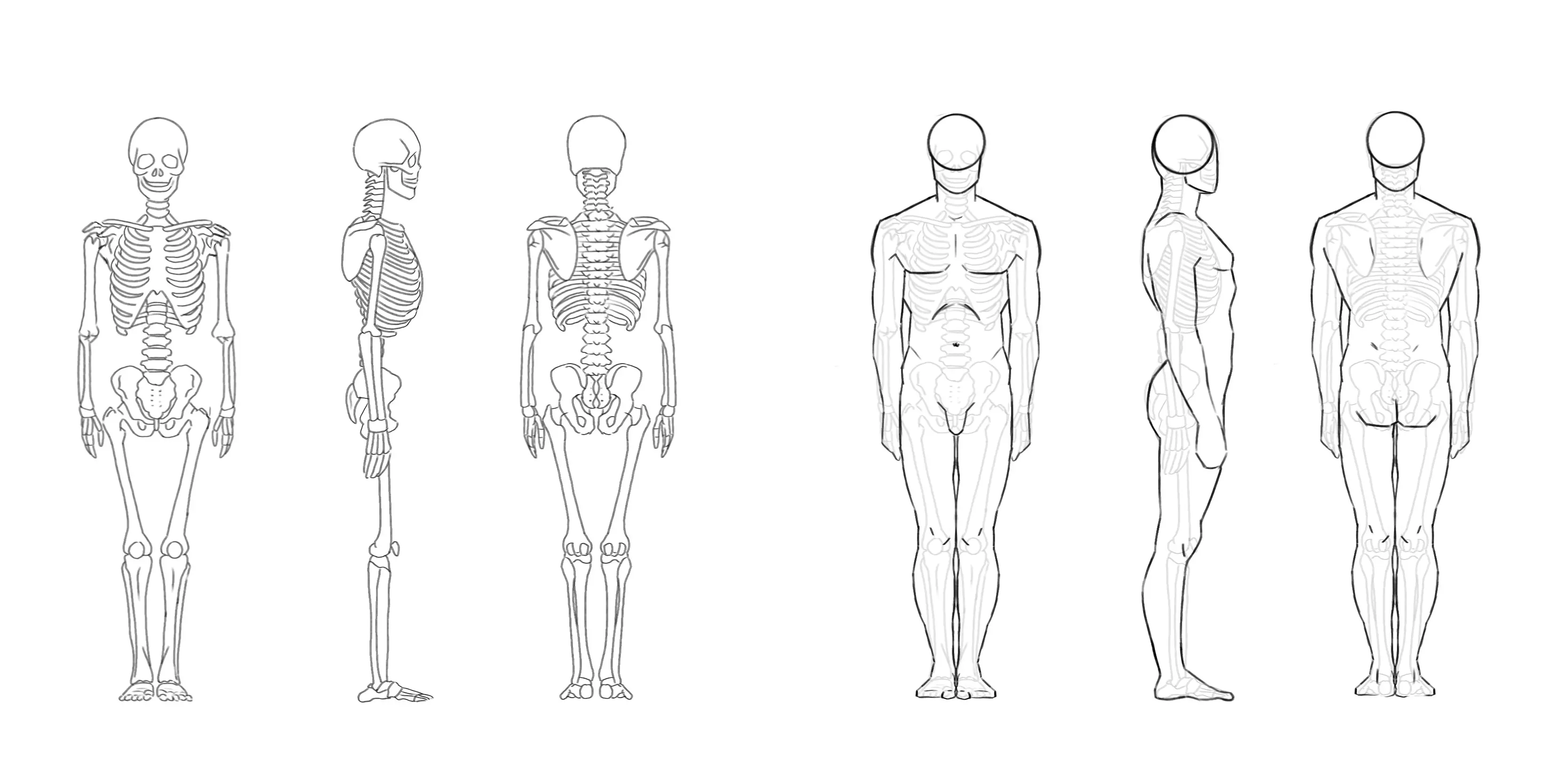
One last aspect to consider is the body mass, more commonly referred to as fat. Again, everyone has it and it varies from person to person.
Below is an example of a female body in which the fat mass is generally distributed. Of course, this example is also valid for men.
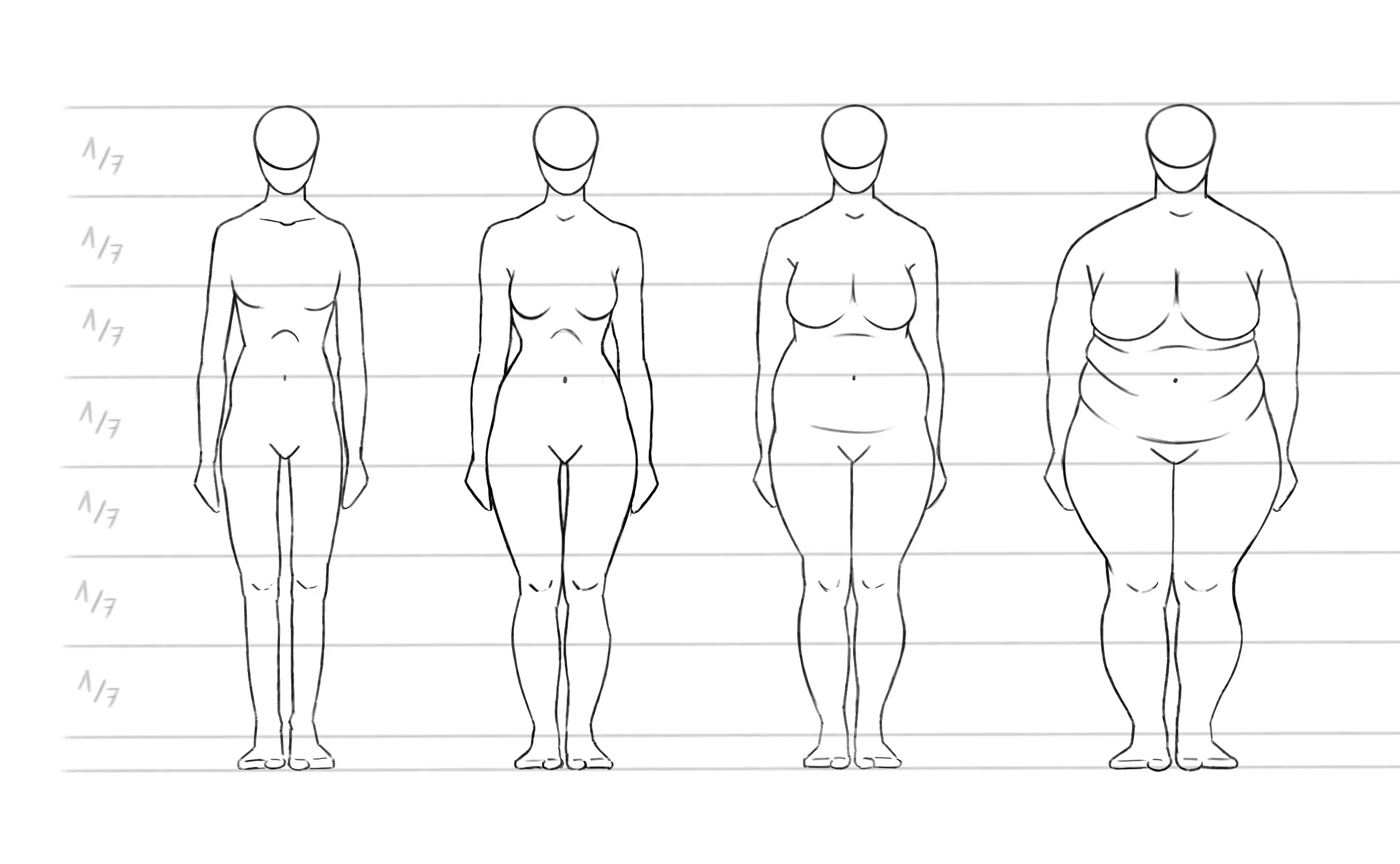
Finally, it is worth noting the morphological differences with the big four classics (below). Generally, the stereotype of the “8” female and the “V” male is used, but knowing the other body shapes can help give even more nuance to the designs.
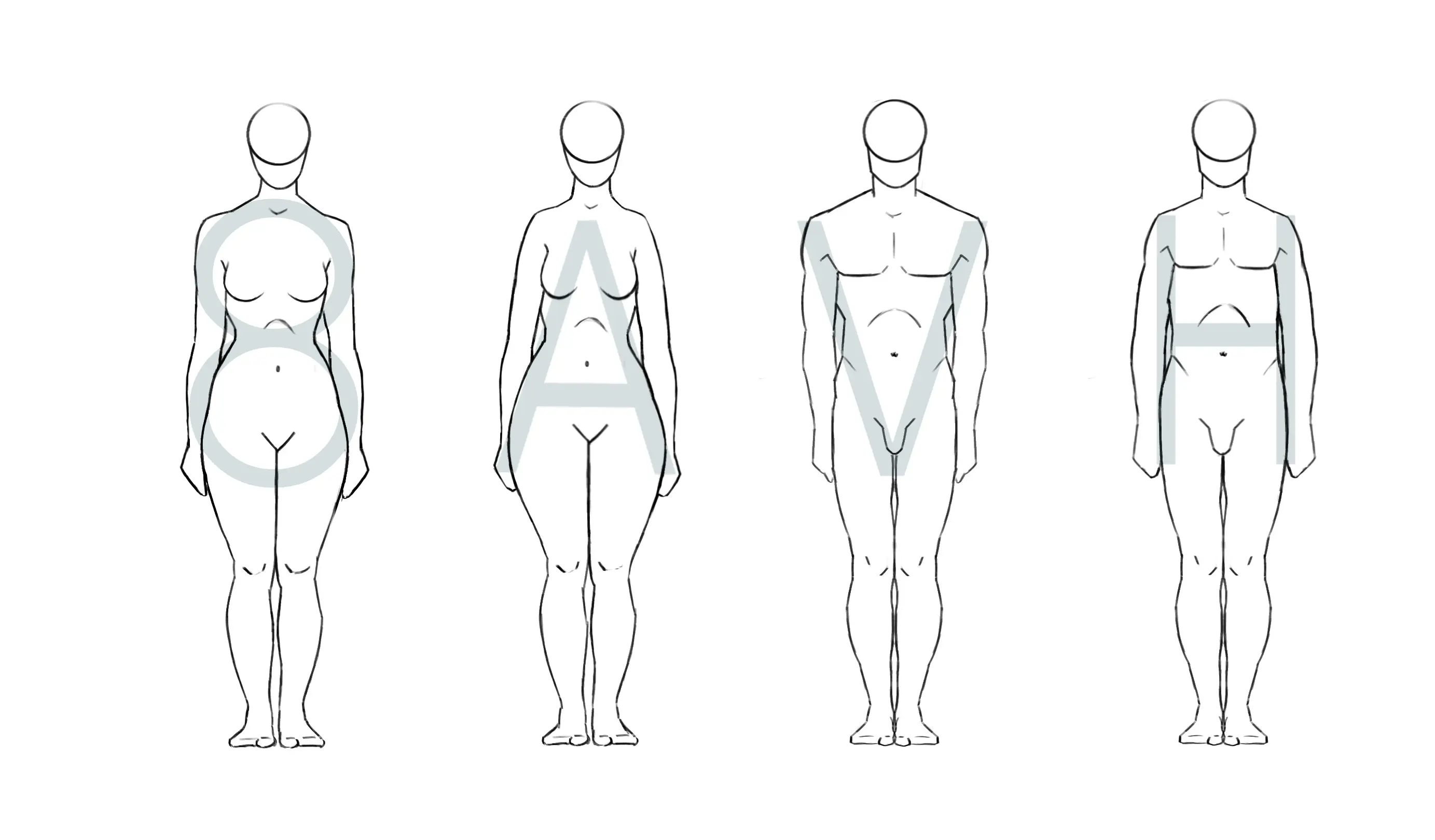
THE PROPORTIONS OF THE HUMAN BODY
Ah, proportions! If you've ever looked into it, you'll notice that there's a variety of opinions, and it can be confusing. Certain drawing styles (especially manga or chibi) adhere to specific proportions, but for everything else, you can draw with classic proportions that work very well.
To draw proportions, we use the size of the head as a unit of measurement and repeat it about 7 times.
Note: Personally, I don't draw proportion lines every time because they can clutter up the design more than anything else, but I do keep them in mind especially for positioning certain important elements such as armpits, pubes or calves.
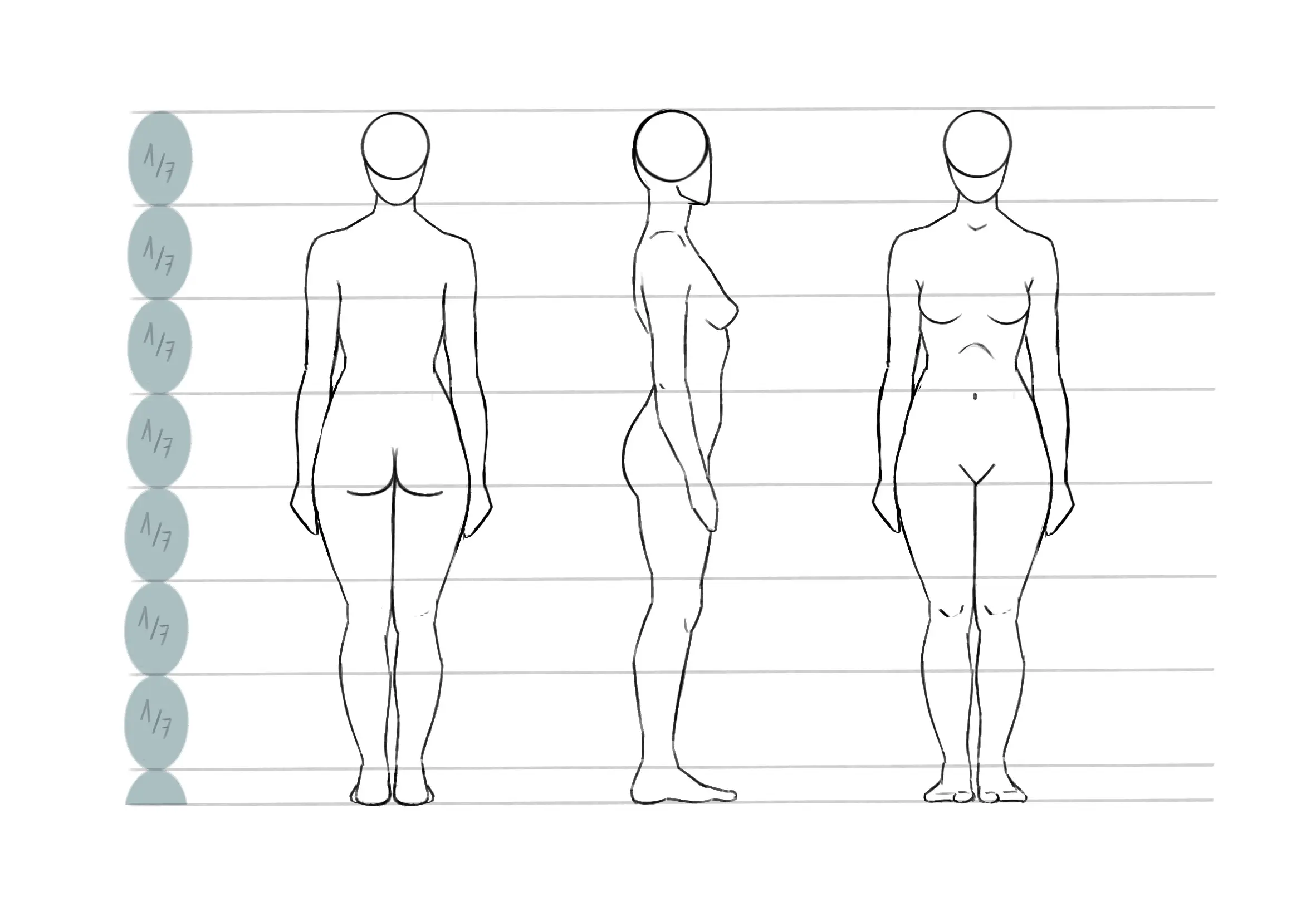
Men, women, and children do not adhere precisely to the same proportions, particularly at the level of the pectoral line. Here is an example below to keep in mind the proportions of each.
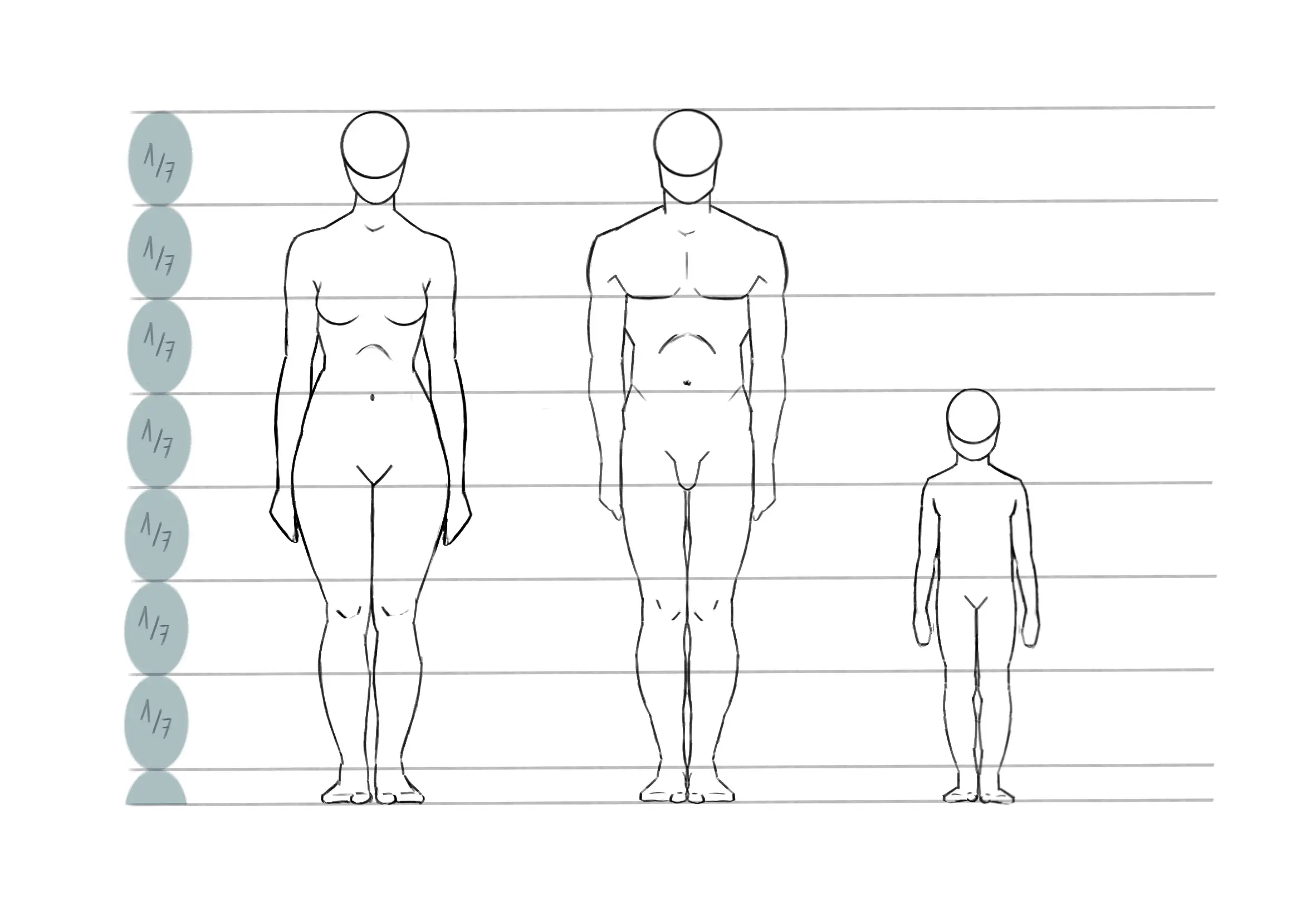
The last point of interest is the “rule of circles”. Any part of the body connected to a joint (such as an arm or a leg) will maintain equivalent proportions.
Note: this is often a major source of error in drawings, where legs or arms are seen disproportionate to other limbs. To avoid this error, their positioning can be checked with the “rule of circles”.
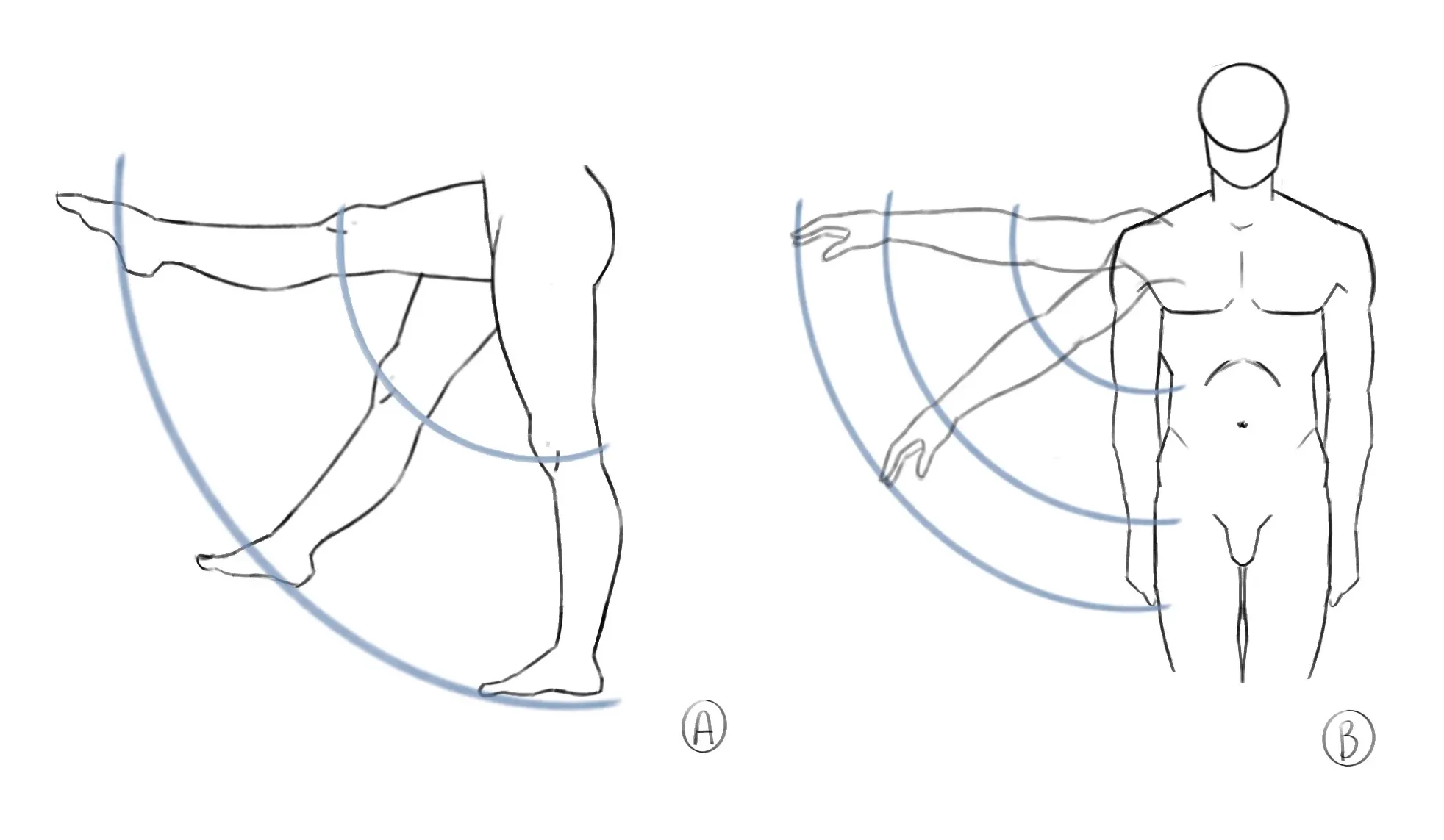
BREAK DOWN TO DRAW BETTER
This point will be rather brief, because it concerns one idea: the main mistake we make when starting to draw anatomy is to draw without establishing the structures. First we draw a head that we like, and then we think that this head would look good on a torso, then we add the torso, and then at the end we add arms and legs, and the whole thing ends up being incoherent.
To address this problem, you first need to think about what you want to draw, then sketch very simple shapes, such as a stick man, and gradually build the whole body around these shapes. Basically, you should not think in 2D but rather in 3D, like sculpting, which is quite counterintuitive at first, but it clearly makes a difference.
Here's how I break down bodies: the main parts (torso, pelvis, thigh...) in gray, and the various joints in blue. There are a thousand ways to break down, this one is quite classic, but I encourage you to find the way that suits you best.
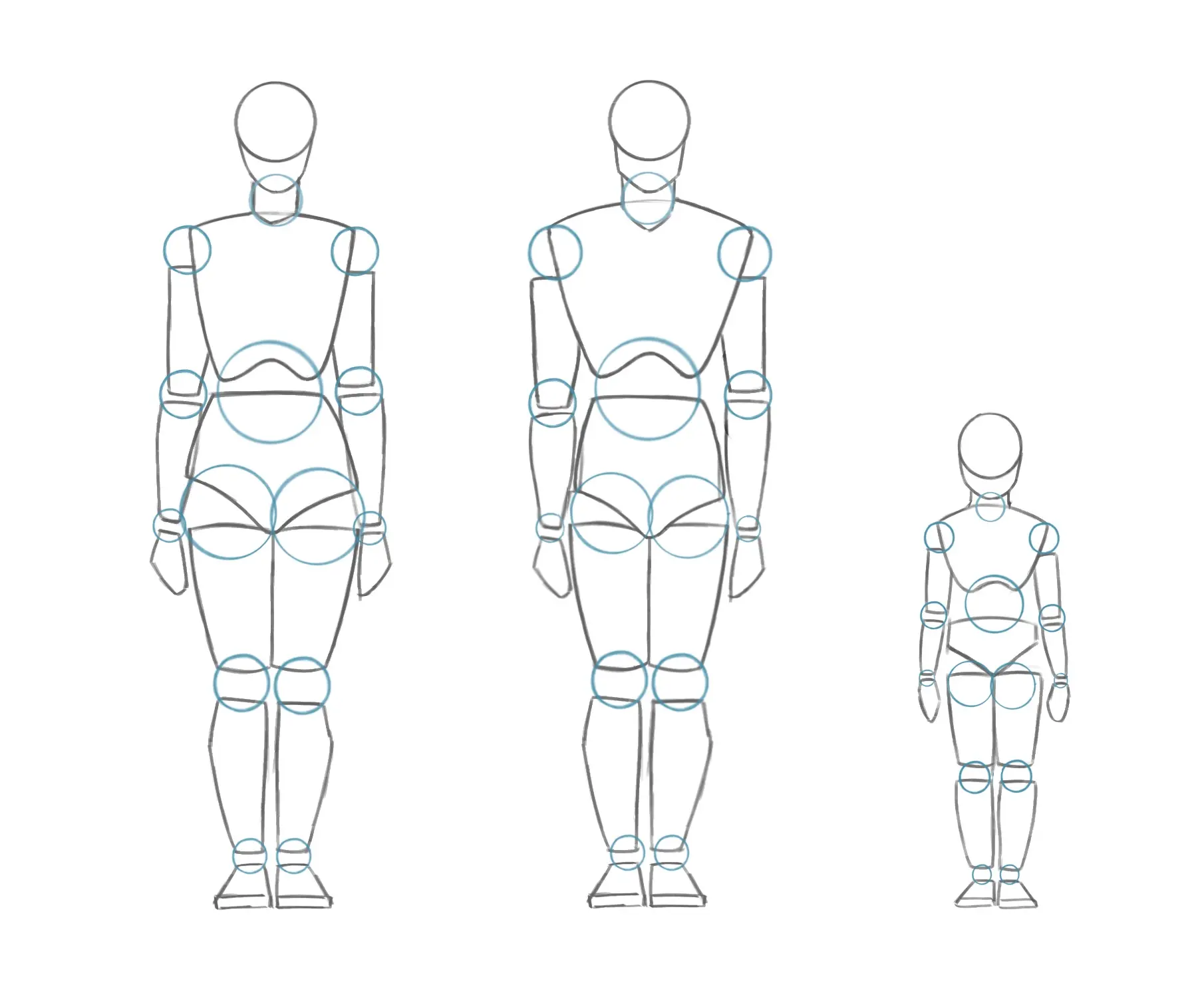
DRAWING A HUMAN BODY STEP BY STEP
Now that we have covered all the basics, let's move on to the practical part.
DRAWING A WOMAN'S BODY
The first steps (1 to 4) must be done without pressing on the pencil or on a separate layer.
I start by drawing the ground line (in blue) and the balance line (in yellow).
I then draw a stickman by placing lines for the shoulders, pelvis, arms and legs, as well as quick sketches for the head and hands. As already mentioned, I do not draw 1/7 lines, but you can use them as a guide at the beginning.
I then proceed to trace the basic volumes of the body.
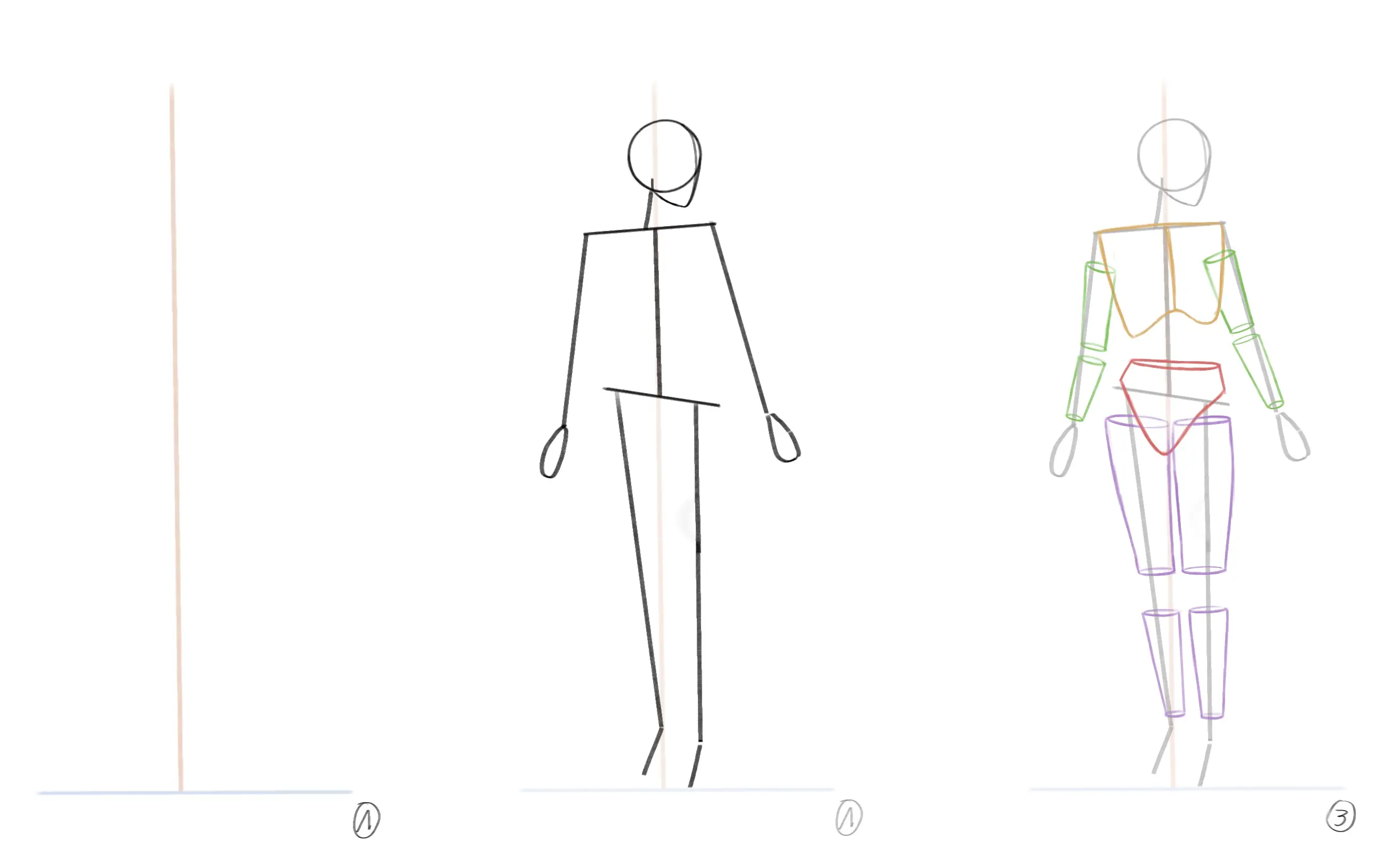
I add circles for the joints (in blue).
I review the structure, adding the breasts and the pubis.
I then add the head, hands, and feet.
I conclude by dressing the character and adding hair.
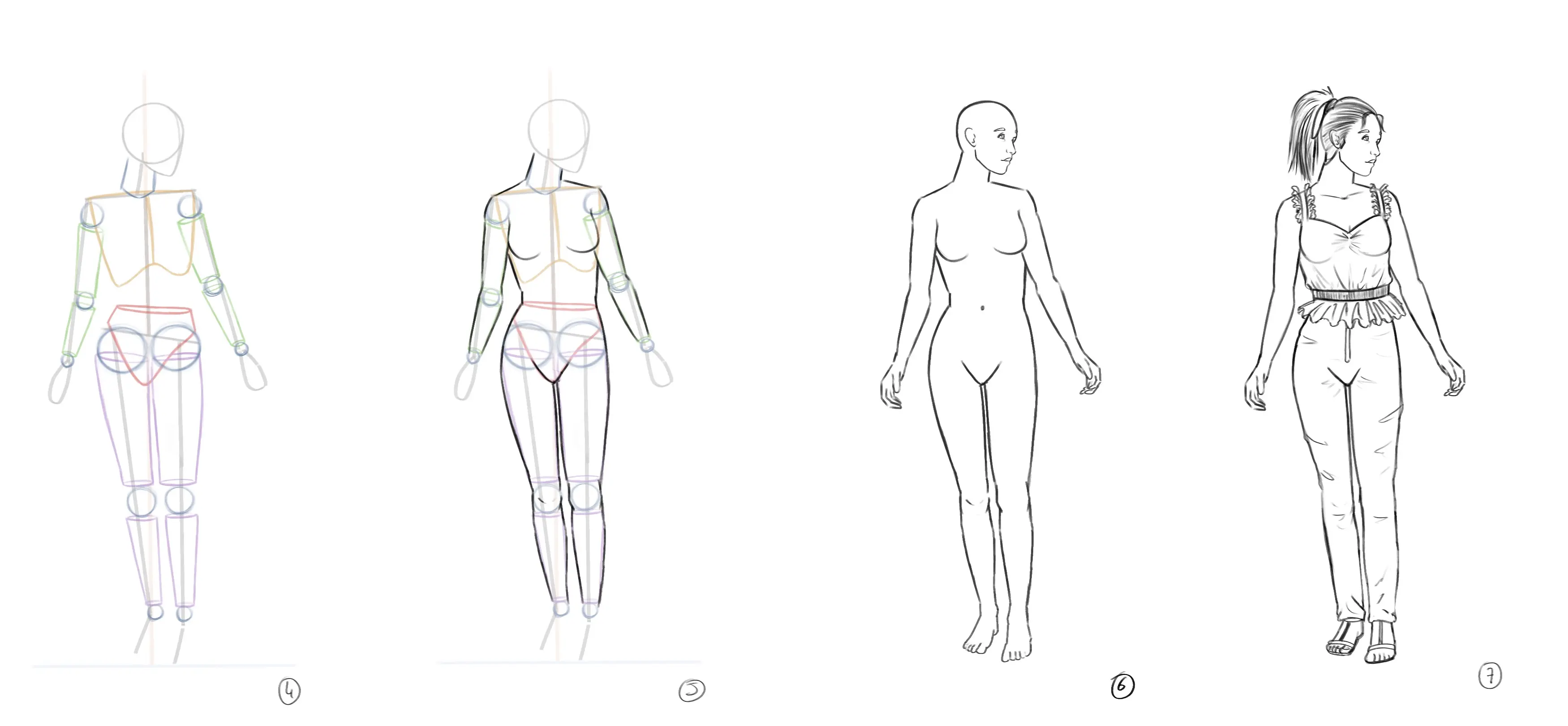
DRAWING A MAN'S BODY
The steps are the same as those for a woman's body, the only differences will be in terms of proportions and musculature.
The first steps (1 to 4) must be done without pressing on the pencil or a separate layer.
I start by drawing the ground line (in blue) and the balance line (in yellow).
I then sketch a stickman positioning the lines for the shoulders, pelvis, arms, and legs, as well as quick sketches for the head and hands.
I then proceed to outline the basic volumes of the body.
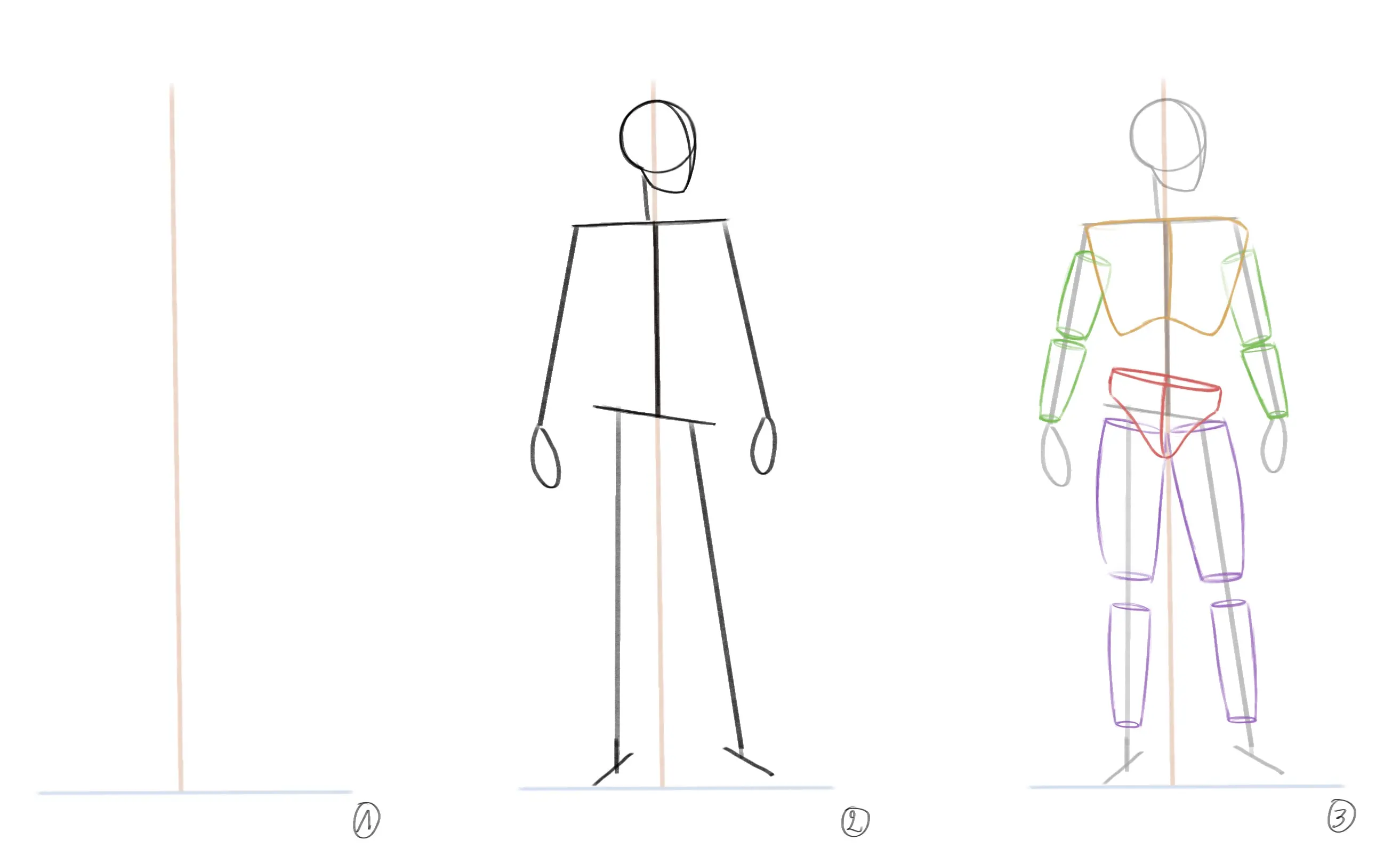
I'm adding the circles for the joints (in blue).
I review the structure, adding the pectorals and the pubis.
I then add the head, hands, and feet.
I finish by dressing the character and adding hair.
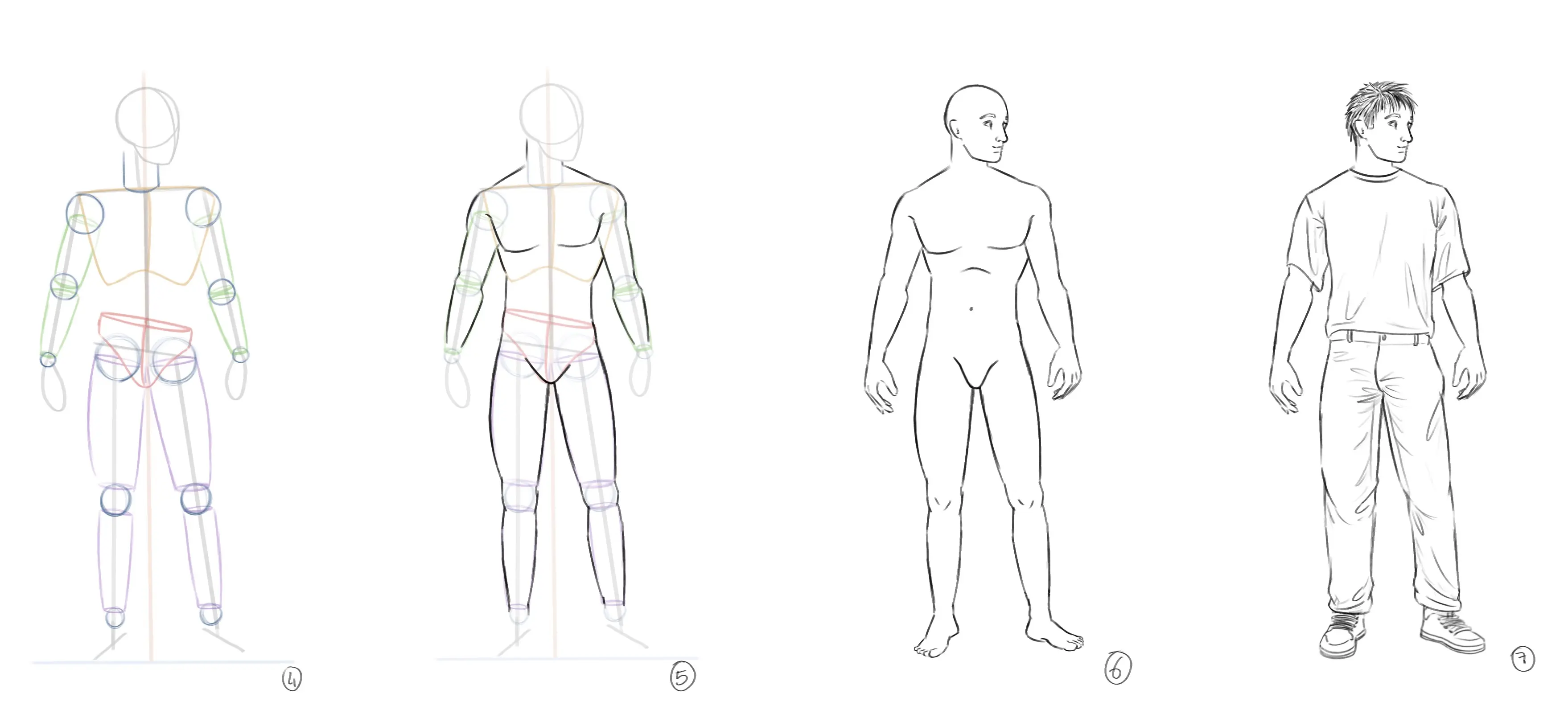
DRAWING A CHILD'S BODY
The principle is the same again, so I have combined some steps. I will go with proportions of 1/5.
I draw the ground line, the balance line, and the stick man.
I add different volumes and articulations
I review the outlines and add the hands, feet, and head.
I dress and style my character.

TO GO FURTHER
If you have difficulty drawing certain elements or if you would like to learn more, here are some articles that might interest you:
Drawing Hands: https://dessindigo.com/en/blog/how-to-draw-a-hand
Drawing a woman's face: https://dessindigo.com/en/blog/drawing-a-woman's-face
Drawing a man's face: https://dessindigo.com/en/blog/how-to-draw-a-mans-face
Drawing a profile face: https://dessindigo.com/en/blog/drawing-tutorial/how-draw-profile-face
Learn more about anatomy: https://dessindigo.com/en/drawing-anatomy
Drawing Clothes: https://dessindigo.com/en/blog/drawing-tutorial/how-draw-clothes


When drawing paper Minecraft portraits, it is important to learn human proportions, as this helps you accurately recreate the shape and details of the face.
It's great to see this article tackle in a clear and accessible way a subject often considered intimidating: human anatomy in drawing. The way it breaks down the elements of the body, from the skeleton to the muscles, including proportions and different body shapes, makes this aspect of drawing much more accessible to beginners.